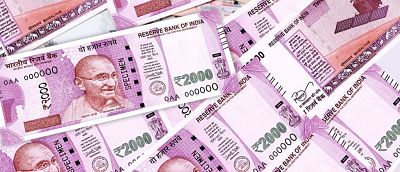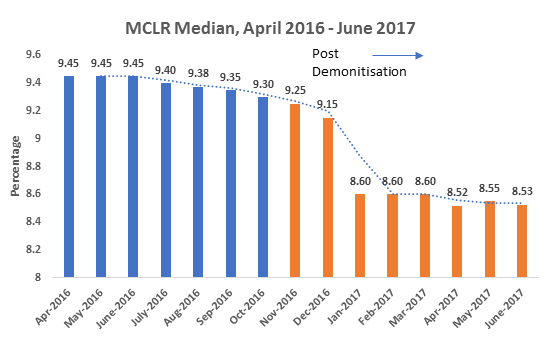Demonetization is defined as seizure of some units of currency or closure of certain legal tender circulating in the economy. On November 8th last year, the Government of India demonetized INR 1,000 and INR 500 notes – two highest valued currencies. The primary objectives were to reduce the flow of black money in the economy, and bring all economic transactions into the open system, make India less reliant on cash economy.
Economists from left as well as right wings have expressed their views on both the negative as well positive impacts that demonetization have had on the economy over the past 12 months. The following points briefly discusses analytical views on both sides.
- GDP Impact: Indian economy underwent a significant structural change with considerable impact on both the demand and supply side of the economy. The declining consumer as well as business spending has been cited as the major factor for declining economic prospects for India with GDP growth for July to September quarter expected to be subdued to just 5.9% – slowest pace since 2014. Hugo Erken, a well-known global economist, has cited that effects of the cash ban were likely to be felt for a few quarters and the high level of non-performing assets are contributing to subdued private investments.
- Business Impact: Small and Medium Enterprises (SMEs) were significantly hit by this exercise as just over one month after implementation All India Manufacturers’ Organization (AIMO) reported that 35% jobs were lost, with 50% loss in revenue for the entities. The figures were expected to reach 60% in terms of employment lost and 60% for revenue losses by March 2017. The Centre for Monitoring Indian Economy (CMIE) brought out the figure as loss of 1.5 million jobs during the period from January to April 2017.
- Rural Impact: Rural areas were the hardest hit in the wake of demonetization as almost all transactions across rural and semi-urban areas in India are predominantly cash-based, where existence of internet banking is perceived to be very limited. Moreover, the government ban on banking transactions in the cooperative banking sector severely hurt the rural agrarian activities and economy. This led to dependence on banking correspondents with long queues for months.
- Declining Lending rates by banks– Since demonetization, there has been a significant decline in the interest rates and various types loan rates – which is expected to boost the consumer as well as private spending going forward. As per RBI’s report the Median Marginal Cost of Lending Rate (MCLR) for Scheduled Commercial Banks has declined from 9.45% in April 16 to 8.53% in June- 2017 which leads to affordable credit and higher standard of living.
- Increasing tax base: Reports suggest that the tax base in India has widened due to demonetization, with the potential to lead to more digitization, less cash and an integration of the informal economy into the formal system. There has been increase of IT returns filers of 25% in 2016-2017, when compared to 2015-2016 of 6.7 million. The provisional figures for direct tax collections up to October 2017 show that net collections are at INR 4.39 lakh crore – 15.2% higher than the net collections for the corresponding period last year. The increased tax revenue with expected higher spending in Infrastructure and development projects will boost economy.
- Digital transactions: Increase in digital transactions is expected to result in greater transparency and is considered as a building block to create a cleaner economy. Reports have shown that electronic payments in India have risen 21% since November 2016 to reach 113.7 trillion rupees in July 2017.
Recent RBI reports have showed that almost 99% of the demonetized notes have found its way into the banking system – questioning the validity of overall exercise. There was further monetary loss to government in terms of RBI dividend to government which halved from INR 65,876 crore to INR 30,659 crore during the period.
However, some experts have cited that short term costs will be outweighed by long-term gains in the future, in terms of strong fundamentals and higher transparency in the economy.




